***WARNING*** This is a bit of a long read, but WELL worth it. For bottom line costs, see the bottom of the post. Thanks! 🙂
I field this question a lot, often worded differently. When people ask me the price for making them a quilt (mostly this comes with T-shirt quilt requests), they frequently reply with shock at the price tag. I get that when all they know about quilts is the crappy mass produced/imported quilts for sale at Cracker Barrel or Walmart for <$100.
At first that frustrated me, and then I started thinking they didn’t know the value of the purchase they wanted to make. I realized, it is really ignorance (I don’t mean that negatively) – these folks probably don’t frequent the local quilt shops and have no idea how much a yard of fabric costs, or what is entailed in making a quilt. It’s not part of their world. Just like I wouldn’t know anything about the cost of running a resort in Fiji.
So I am here to dish the details, but I’m going to try to keep it simple for easy understanding. REMEMBER: this is MY information in MY area of the country. I can tell you that just 4 hours south of me fabric costs $1 more PER YARD. I am positive that other areas of the country have a bit of variety in cost as well.
Let’s take a large lap sized T-shirt quilt as an example. Let’s say this quilt measures 60″x60″ (5′ square). Understand that with larger sizes, the cost goes up because the top is bigger, the back is bigger, the center is bigger, the edging is longer and the labor is definitely higher.
Here is the breakdown:
1. Fabric. Even with a T-shirt quilt, there is a lot of fabric to be purchased. Sold by the yard, you CAN find cheap fabric at Walmart or Joann’s or various other craft stores. But if you EVER have the chance, go in and FEEL those fabrics. They are CHEAP for a reason! Generally a looser weave, they feel scratchy and are not as densely woven, which will result in a less soft quilt, potentially more shrinkage and faster fading, and one that will fall apart or procure holes much more quickly.
For this size quilt, the yardage requirements are as follows: top for sashing 1 yard, top border 1 yard, backside of the quilt 4 yards, binding for the edge can probably be obtained from the extra backing after the piece has been quilted. Total yardage: 6 yards. I only buy fabric from the local quilt shop, so the fabric will cost anywhere from $8/yard (for solids and muslin) to $13. The most common price I pay for fabric is $11.29/yard. Total fabric cost: $67.74 (plus tax).
2. Stabilizer. This is REQUIRED for any T-shirt quilt to properly be made (in my opinion). True, not everyone uses it, but when people bring me T-shirt quilts to quilt for them, I insist. It just creates a mess when the shirts are not backed with stabilizer. They stretch when put together and end up forcing creases in the shirts when quilted. There are many brands and types, costing anywhere from $0.99/yard (only 17″ wide) to $6.99/yard. So let’s go with an average for simplicity sake: mostly I use the $2.99/yard 17″ wide medium weight stabilizer. The shirts will take probably 10 yards of stabilizer, so the total cost of stabilizer: $29.90.
3. Batting. This is what goes in the center of the quilt. With a lightweight batting (just like with a lightweight stabilizer) the batting will not add weight, but you can get a high-density batting if you want it heavy and thick. Different battings have different requirements for how far apart they can be tied or stitched, so if someone says they’re going to stitch around the outside of the shirts only, then your batting WILL fall apart – that’s not close enough in. Generally I use a cotton polyester blend for T-shirt quilts, which costs $8/yard. Needing about 2 yards for this project, total batting cost: $16.
4. Quilting. While this IS labor, I put it separately because some quilt makers send the quilts to someone else for this service, or tie the quilt (which technically makes it not a quilt, but a comfort). I perform it myself, but the rate is different than how I figure general labor. In this geographic area, we generally charge $0.02/square inch of the quilt top for an all over (aka edge to edge) design. Custom quilting brings a higher charge. So this quilt 60″x60″ = 3600 square inches. 3600 x $0.02 = $72. I also charge a $5 thread fee. Total for quilting: $77.
5. Labor. This is the real variable. While time = money, more importantly EXPERIENCE = MONEY. You will DEFINITELY get what you pay for. Much like fabric, the rates can vary depending on where you live. I am very efficient, and I charge $25/hour. Some people have asked why I charge so much “just to sew”. Well, while the words from my mouth were sweeter than in my head, the response was basically, if you don’t want to learn to do it yourself, don’t question what I charge for my expertise. That being said, a quilt this size usually takes me 8-9 hours, but I charge 6 hours of labor for the assembly. Total labor: $150.
6. Binding. This, too, is labor, but again, a separate calculation. This is the edging around the quilt. For binding prep and attachment by machine both front and back I charge $0.30 per linear inch around the edge. You may find someone that charges less, but they may not have mitered junctions, or mitered corners. If you want the binding attached to the back by hand, expect to pay more. 60″ x 4 edges = 240 linear inches x $0.30 = total binding cost: $72.
All this being said, here is a few photos of what I produce, for comparison purposes. You can see the finished product is crisp and clean, very professional looking.
Assuming I haven’t forgotten anything, here’s the tally:
- Fabric (est tax incl) $73
- Stabilizer $30
- Batting $16
- Quilting $77
- Labor $150
- Binding $72
- TOTAL $418 (before tax)
Amazed? You shouldn’t be. Honestly I am amazed when some people charge such low fees for their work. I gather they either value their time differently or are using REALLY cheap fabric. Bottom line: THIS IS THE COST. IF SOMEONE TELLS YOU THEY CAN DO IT FOR LESS, UNDERSTAND THAT THE DIFFERENCE WILL COME FROM ONE OF THESE AREAS. And to ensure you are protecting yourself, see my blog about questions to ask prior to buying a T-shirt quilt.


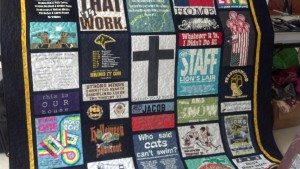
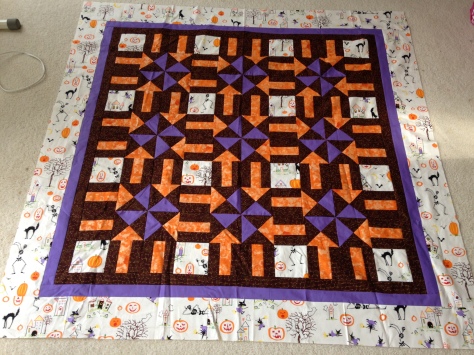

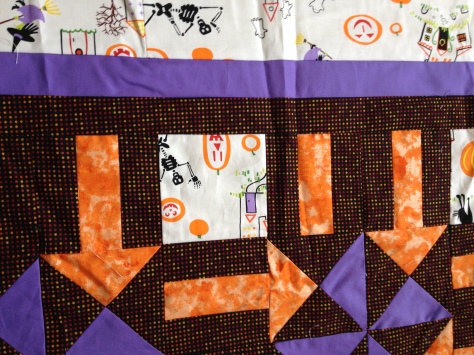

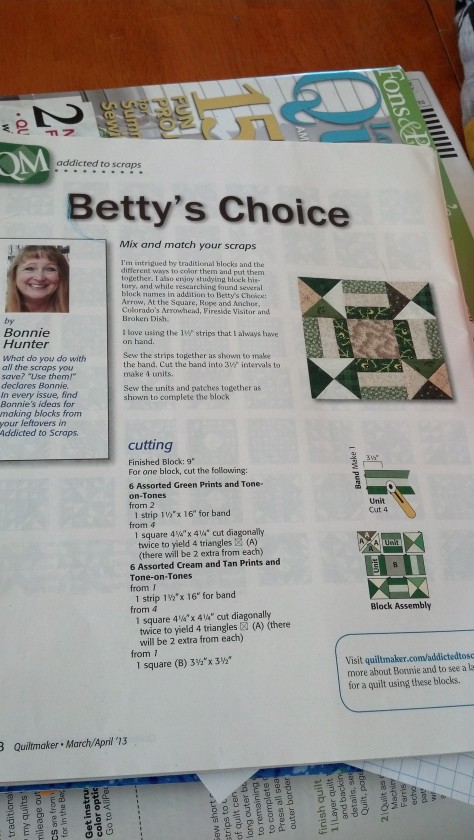




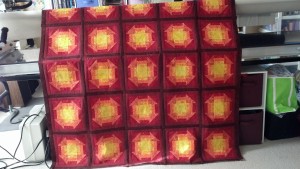
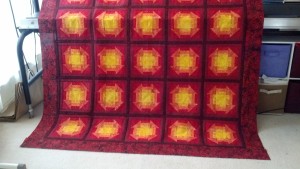

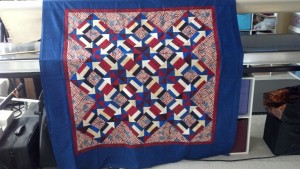
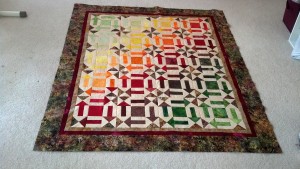

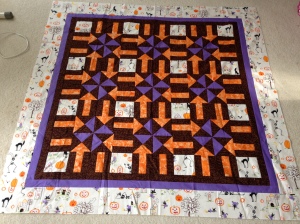










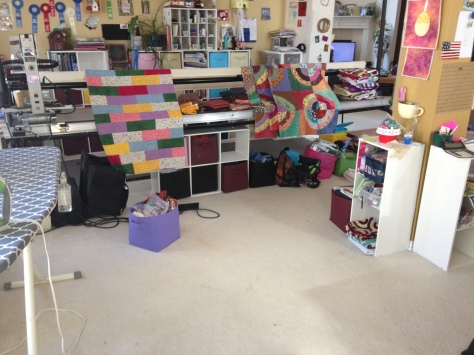
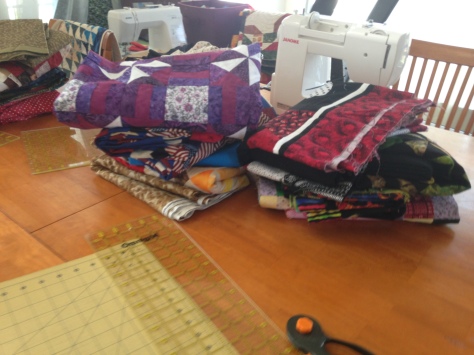
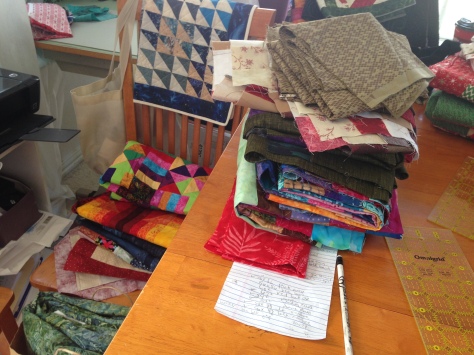
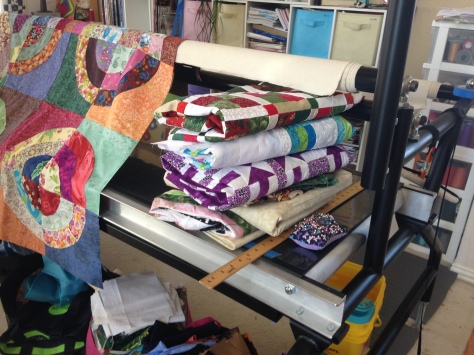
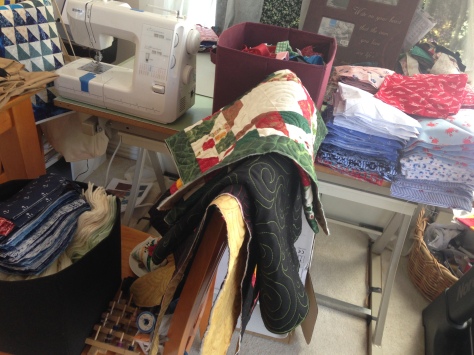
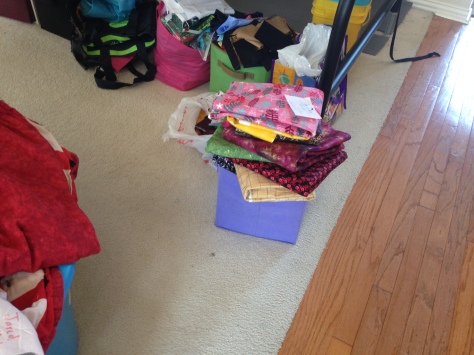
You must be logged in to post a comment.